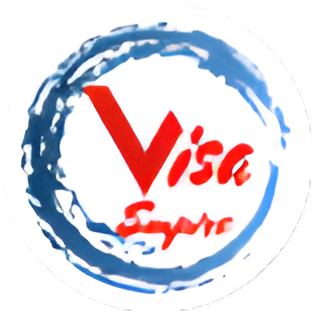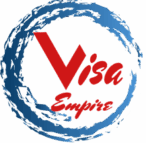Explore Visa Categories: Your Guide to Visa Options and Requirements
FAQ 491 Visa
The 491 Visa is a skilled migration visa for Australia that allows skilled workers and their families to live and work in designated regional areas of Australia on a temporary basis with a pathway to permanent residency. Below are some frequently asked questions (FAQ) related to the 491 Visa:
What is the 491 Visa?
The 491 Visa is a temporary visa for skilled workers who are nominated by a state or territory government or sponsored by an eligible family member living in a designated regional area of Australia. It is part of the General Skilled Migration (GSM) program.
How does the 491 Visa work?
To apply for a 491 Visa, you must first be nominated by a state or territory government or be sponsored by an eligible family member in a designated regional area. Once nominated or sponsored, you can submit an Expression of Interest (EOI) through the SkillSelect system and, if invited, apply for the visa.
What are the eligibility requirements for the 491 Visa?
The eligibility criteria for the 491 Visa include having a relevant occupation on the skilled occupation list, obtaining a positive skills assessment for that occupation, meeting the points test requirement, being nominated or sponsored in a designated regional area, and meeting health and character requirements.
What is the points test requirement?
To be eligible for the 491 Visa, you must score a minimum number of points on the points test. Points are awarded based on factors such as age, English language proficiency, work experience, and education.
What is the difference between the 491 Visa and the 190 Visa?
The key difference is that the 491 Visa is a temporary visa with a pathway to permanent residency, while the 190 Visa is a direct route to permanent residency. The 491 Visa requires you to live and work in a designated regional area for a specified period before you can apply for permanent residency.
Can I include family members in my 491 Visa application?
Yes, you can include certain family members, such as your spouse/partner and dependent children, in your 491 Visa application. They will also be granted temporary residency if your application is successful.
What are the obligations associated with the 491 Visa?
One of the primary obligations is to live, work, and study in a designated regional area of Australia. You are also required to notify the Department of Home Affairs of any changes in your address or contact details.
Can I apply for permanent residency after the 491 Visa?
Yes, the 491 Visa has a pathway to permanent residency through the 191 Visa. To be eligible for the 191 Visa, you must have lived and worked in a designated regional area for a specified period while holding the 491 Visa and meet other criteria.
Can I apply for Australian citizenship after obtaining the 491 Visa?
Yes, once you have held permanent residency in Australia for a certain period and meet other eligibility criteria, you may apply for Australian citizenship.
What are the processing times for the 491 Visa?
Kindly follow link below:
Please note that immigration policies and requirements can change over time, so it’s essential to check the latest information on the official Department of Home Affairs website or consult with a registered migration agent for the most up-to-date and personalized advice regarding the 491 Visa.
FAQ 191 Visa
The 191 Visa, also known as the Permanent Residence (Skilled Regional) Visa, is an Australian visa that allows skilled workers and their families to live and work in regional areas of Australia on a permanent basis. It is a pathway to Australian permanent residency and citizenship. Below are some frequently asked questions (FAQ) related to the 191 Visa:
What is the 191 Visa?
The 191 Visa is a permanent residency visa for skilled workers who have held a Temporary Residence (Skilled Regional) Visa (subclass 491 or 494) for at least three years and have met the conditions associated with that visa.
How does the 191 Visa work?
To be eligible for the 191 Visa, you must have held a Temporary Residence (Skilled Regional) Visa for at least three years, complied with the conditions of that visa, and have met the minimum income threshold through eligible employment in a designated regional area of Australia.
What is the minimum income threshold for the 191 Visa?
The minimum income threshold varies depending on the number of years you have held the Temporary Residence (Skilled Regional) Visa. It is necessary to meet the specified income threshold for each of the three years immediately before applying for the 191 Visa.
Can I include family members in my 191 Visa application?
Yes, you can include certain family members, such as your spouse/partner and dependent children, in your 191 Visa application. They will also be granted permanent residency if your application is successful.
Do I need to live in the designated regional area for the entire three years on the Temporary Residence (Skilled Regional) Visa?
Yes, you must have lived and worked in a designated regional area of Australia for the entire three-year period while holding the Temporary Residence (Skilled Regional) Visa.
Can I change employers or locations while on the Temporary Residence (Skilled Regional) Visa?
Changing employers or locations may affect your eligibility for the 191 Visa. It’s essential to consult with the Department of Home Affairs or a registered migration agent if you are considering such changes.
What are the conditions of the 191 Visa?
The conditions of the 191 Visa typically include maintaining lawful residence in Australia, notifying the Department of Home Affairs of any changes in your address or contact details, and complying with the requirements of Australian laws.
Can I apply for Australian citizenship after obtaining the 191 Visa?
Yes, once you have held the 191 Visa for a certain period and meet other eligibility criteria, you may be eligible to apply for Australian citizenship.
Please note that immigration policies and requirements can change over time, so it’s essential to check the latest information on the official Department of Home Affairs website or consult with a registered migration agent for the most up-to-date and personalized advice regarding the 191 Visa.
What are the processing times for the 191 Visa?
Please note that immigration policies and requirements can change over time, so it’s essential to check the latest information on the official Department of Home Affairs website or consult with a registered migration agent for the most up-to-date and personalized advice regarding the 186 Visa.
What is the 190 Visa?
The 190 Visa is a skilled migration visa for Australia that allows skilled workers who are nominated by a state or territory government to live and work in Australia as permanent residents. Here are some frequently asked questions (FAQ) related to the 190 Visa:
What is the 190 Visa?
The 190 Visa is a permanent residency visa for skilled workers who are nominated by a state or territory government in Australia. It is one of the General Skilled Migration (GSM) visas.
How does the 190 Visa work?
To apply for a 190 Visa, you must first be nominated by an Australian state or territory government. Once nominated, you can submit an Expression of Interest (EOI) through the Skill Select system and, if invited, apply for the visa.
What are the eligibility requirements for the 190 Visa?
The eligibility criteria for the 190 Visa include having a relevant occupation on the skilled occupation list, obtaining a positive skills assessment for that occupation, meeting the points test requirement, being nominated by a state or territory government, and meeting health and character requirements.
How do I get nominated by a state or territory government?
Each Australian state and territory has its own criteria and occupation lists for nomination. You should check the specific requirements of the state or territory where you wish to be nominated and follow their application process.
What is the points test requirement?
To be eligible for the 190 Visa, you must score a minimum number of points on the points test. Points are awarded based on factors such as age, English language proficiency, work experience, and education.
Is there an age limit for the 190 Visa?
While there is no upper age limit for the 190 Visa, the points awarded for age decrease as you get older. However, some states or territories may have age limits for nomination.
Can I include family members in my 190 Visa application?
Yes, you can include certain family members, such as your spouse/partner and dependent children, in your 190 Visa application. They will also be granted permanent residency if your application is successful.
Do I need to live in the nominating state or territory after getting the 190 Visa?
While you are required to live in the nominating state or territory for a certain period after receiving the visa (usually 2 years), there is no obligation to stay in that specific location for the entire duration of your permanent residency
Can I apply for Australian citizenship after obtaining the 190 Visa?
Yes, once you have lived in Australia as a permanent resident for a certain period and meet other eligibility criteria, you may apply for Australian citizenship.
What are the processing times for the 190 Visa?
Please note that immigration policies and requirements can change over time, so it’s essential to check the latest information on the official Department of Home Affairs website or consult with a registered migration agent for the most up-to-date and personalized advice regarding the 186 Visa.
What is the 485 Visa?
The 485 Visa, also known as the Temporary Graduate Visa, is an Australian visa that allows international students who have completed their studies in Australia to remain temporarily to gain practical work experience. Below are some frequently asked questions (FAQ) related to the 485 Visa:
What is the 485 Visa?
What are the two streams of the 485 Visa?
The 485 Visa has two streams: the Graduate Work stream and the Post-Study Work stream. The stream you are eligible for depends on your qualifications and the field of study you completed.
Who is eligible for the Graduate Work stream?
The Graduate Work stream is for international students who have completed a qualification in Australia that is relevant to an occupation on the Skilled Occupation List (SOL). This stream allows you to work in Australia for up to 18 months.
Who is eligible for the Post-Study Work stream?
The Post-Study Work stream is for international students who have completed a higher education degree (Bachelor’s, Master’s, or Doctoral) in Australia. The length of the visa under this stream varies based on the level of qualification: two, three, or four years.
What are the English language requirements for the 485 Visa?
You must demonstrate English language proficiency when applying for the 485 Visa. The specific English language requirements may vary based on your individual circumstances, such as your nationality and the stream you are applying for.
Do I need to have health insurance for the 485 Visa?
Yes, you are required to have adequate health insurance in Australia for the duration of your stay on the 485 Visa. This is known as Overseas Student Health Cover (OSHC).
Can I include family members in my 485 Visa application?
Yes, you can include your spouse or de facto partner and dependent children in your 485 Visa application. They will be granted the same visa duration and conditions as you.
Can I study while on the 485 Visa?
Yes, you are allowed to study in Australia while holding a 485 Visa. However, you should be aware of the conditions of your visa, and the primary purpose of the visa is to gain work experience.
Can I apply for permanent residency after the 485 Visa?
The 485 Visa is a temporary visa and does not provide a direct pathway to permanent residency. However, during your stay in Australia, you may become eligible for other permanent residency visas, such as skilled migration visas, if you meet the criteria.
What are the processing times for the 485 Visa?
Please note that immigration policies and requirements can change over time, so it’s essential to check the latest information on the official Department of Home Affairs website or consult with a registered migration agent for the most up-to-date and personalized advice regarding the 186 Visa.
What is the 400 Visa?
The 400 Visa is a temporary visa for Australia that is designed for short-term visits for specific purposes, such as work or attending an event. Below are some frequently asked questions (FAQ) related to the 400 Visa:
What is the 500 Visa?
The 500 Visa is an Australian student visa that allows international students to study full-time at a registered Australian educational institution. Below are some frequently asked questions (FAQ) related to the 500 Visa:
What is the 600 Visa?
The 600 Visa is a visitor visa for Australia, designed for individuals who wish to visit the country temporarily for various purposes such as tourism, visiting family and friends, or attending business meetings. Below are some frequently asked questions (FAQ) related to the 600 Visa:
What is the 482 Visa?
The 482 Visa, also known as the Temporary Skill Shortage (TSS) Visa, is an Australian work visa that allows employers to sponsor skilled overseas workers to fill temporary skill shortages in the Australian labor market. Here are some frequently asked questions (FAQ) related to the 482 Visa:
What is the 186 Visa?
The 186 Visa, also known as the Employer Nomination Scheme (ENS) Visa, is a permanent residency visa for skilled workers sponsored by an Australian employer. Here are some frequently asked questions (FAQ) related to the 186 Visa:
What is AFP?
The Australian Federal Police (AFP) is Australia’s primary federal law enforcement agency. It enforces Commonwealth criminal law, safeguards national security, and represents Australia in international law enforcement engagements.
How do I apply for an AFP check?
You can apply for an AFP check either online or via mail. The process requires submitting an application form, providing 100 points of identification, and paying the prescribed fee. Ensure all documents meet the AFP’s identity verification standards.
How many points of identification are needed to start the application?
You must provide a minimum of 100 points of identity documents to proceed with the application.
What is the minimum number of documents required from the ‘Primary Documents’ list?
At least one document from the Primary Documents list is mandatory.
I don’t have an Australian driver’s license. Can I still apply?
Yes. If you do not have an Australian driver’s license, you can proceed using documents from the Secondary Documents checklist.
What should I select under the ‘Purpose Type’ column?
You should select ‘Commonwealth Employment/Purpose’ in the ‘Purpose Type’ field of the application.
What is the correct option to choose under ‘Purpose of Check’?
You must choose Option 33-Immigration/Citizenship-for supply to the Department of Home Affairs.
How long does it take to receive the AFP certificate?
You will typically receive your digital certificate within 7 days of submitting a complete and correct application.


